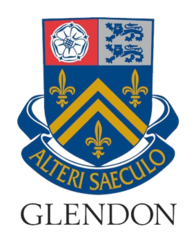Campus Glendon de l’Université York | |
 | |
Other name | Glendon Campus |
|---|---|
| Motto |
|
| Type | Public |
| Established | 1966 |
| Endowment | $270 million (CAD) |
| Chancellor | Gregory Sorbara |
| President | Rhonda Lenton |
| Principal | Marco Fiola |
Administrative staff | 225 |
| Undergraduates | 2,071[1] |
| Location | , , |
| Campus | Midtown, suburban, 34.4 ha (85 acres) |
| Language | Bilingual (English & French) |
| Affiliations | ACUFC, CNFS,[2] CUFO[3] |
| Website | www.glendon.yorku.ca |
Glendon College is a public liberal arts college in Toronto, Ontario, Canada. Formally the federated bilingual campus of York University, it is one of the school's nine colleges and 11 faculties with 100 full-time faculty members and a student population of about 2,100. Founded as the first permanent establishment of York University, the school began academic operation under the mentorship of the University of Toronto in September 1960.[4] Under the York University Act 1959 legislation, York was once an affiliated institution of the University of Toronto, where the first cohort of faculty and students originally utilized the Falconer Hall building[5] (now part of the Faculty of Law)[6] as a temporary home before relocating north of the St. George campus to Glendon Hall — an estate that was willed by Edward Rogers Wood for post-secondary purposes.[7]
In 1962, a landlot grant was offered by the Province of Ontario to build a new university, which eventually ceased the bilateral partnership between the two schools. York University became an independent institution;[8] however, Glendon refused to transfer to the main Keele Campus, as the University of Toronto had no interest in reacquiring or maintaining the donated Wood property.[9] Murray G. Ross and diplomat Escott Reid, who mutually proposed a novel plan for the college to educate students for fields in civil service, governance and academia, were appointed president and principal in 1959 and 1965, respectively.[10] In 1966, Glendon was officially inaugurated by Prime Minister Lester B. Pearson with the objective of "helping its students develop an informed and active interest in public affairs; by encouraging them to become committed to improving the community in which they live; the country of which they are citizens; and the world which they occupy."[11][12]
- ^ "Faculty Council Minutes" (PDF). Glendon College. York University. Retrieved 16 January 2020.
- ^ "Établissement Membres et partenaires du CNFS". CNFS. ACUFC. Retrieved 29 May 2020.
- ^ "Nos universités". Consortium des universités de la francophonie ontarienne. CUFO. Retrieved 29 May 2020.
- ^ Friedland, Martin (2013). The University of Toronto: A History (illustrated, reprint ed.). Toronto: University of Toronto Press. pp. 410, 438, 443. ISBN 9781442615366.
- ^ "Law School Buildings - University of Toronto Faculty of Law".
- ^ "YorkPhaseOne".
- ^ "Glendon Hall".
- ^ "phase three Keele".
- ^ Pietropaolo, Vicenzo; Horn, Michiel (11 December 2008). York University: The Way Must Be Tried. ISBN 9780773577244.
- ^ Horn, Michiel (11 December 2008). York University: The Way Must Be Tried. McGill-Queen's Press - MQUP. ISBN 9780773577244 – via Google Books.
- ^ "Address by the Right Honourable L.B. Pearson" (PDF).
- ^ "Glendon College - its first 10 years, 1966-1976". YouTube.
